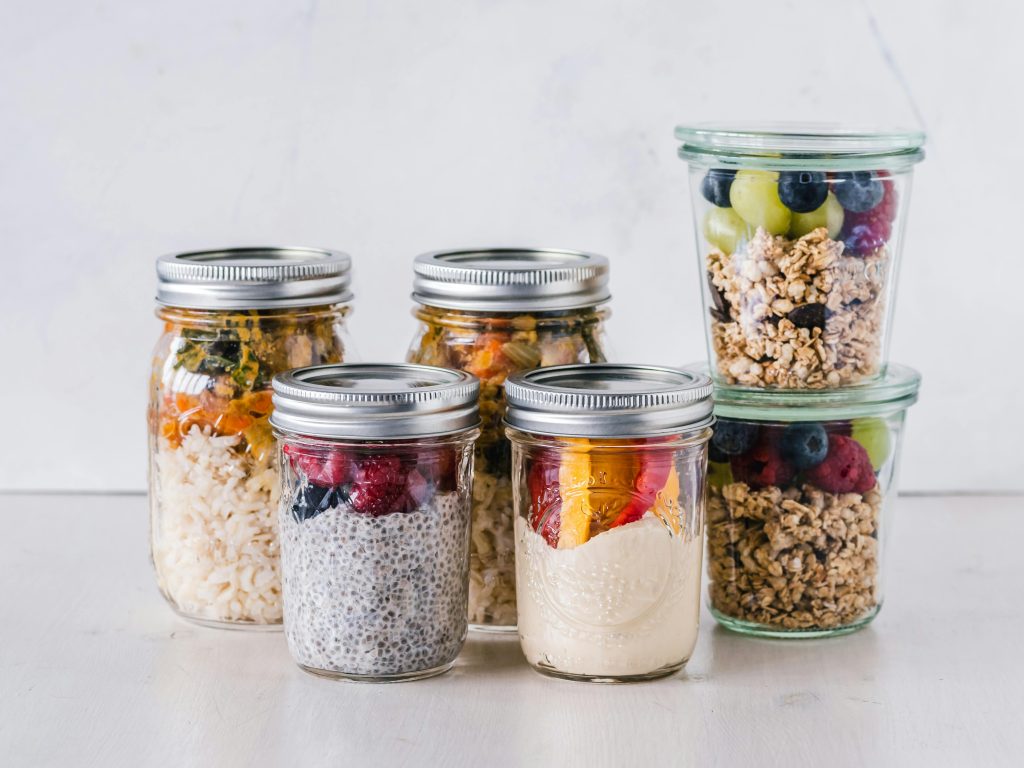Nutritional Foundations for Weight Loss
Embarking on a weight loss journey involves more than just cutting calories—it requires a solid foundation of nutritional knowledge and mindful choices that support lasting change. Building a sustainable approach to healthy eating is the way to go. Without a balanced diet, even the best workout routines may fall short of your goals, as nutrition plays a critical role in managing weight, maintaining energy, and supporting overall health. By understanding the essentials of nutrition, you can set yourself up for success, make healthier choices, and sustain your progress over time.
In this post, we’ll cover the building blocks of a nutritious diet, key dietary strategies for weight loss, and practical tips to help you navigate food choices in everyday life.

1. The Basics of Balanced Nutrition
Balanced nutrition means providing your body with a mix of macronutrients and micronutrients essential for optimal functioning. When it comes to weight loss, understanding what your body needs can help you create a diet that supports both your health and weight goals.
Macronutrients
The macronutrients—carbohydrates, proteins, and fats—each serve unique functions in the body. Rather than avoiding any one group, weight loss requires finding the right balance that keeps you feeling satisfied, fuels your activities, and creates a slight caloric deficit.
- Carbohydrates: Often misunderstood in diet culture, carbs are the body’s primary energy source, especially for physical activity and brain function. Choose complex carbohydrates like whole grains, vegetables, and legumes, which provide longer-lasting energy and are less likely to cause spikes in blood sugar.

- Protein: Protein is essential for muscle repair and growth, and it plays a key role in satiety. Aim to include a source of lean protein with each meal, such as chicken, turkey, fish, eggs, tofu, or legumes, as this helps stabilize blood sugar and reduces cravings.
- Fats: Healthy fats are necessary for hormone production, brain health, and absorbing fat-soluble vitamins. Choose sources like avocados, nuts, seeds, olive oil, and fatty fish. Though calorie-dense, moderate healthy fats can keep you feeling full, helping control overall caloric intake.
Micronutrients
Micronutrients, including vitamins and minerals, are just as crucial as macronutrients. Essential nutrients like vitamin D, calcium, iron, and potassium support everything from bone health to immune function. A varied diet rich in vegetables, fruits, lean proteins, and whole grains will typically cover your needs, but if you’re cutting calories, you may need to pay closer attention to ensure adequate nutrient intake.

2. Creating a Caloric Deficit: The Core of Weight Loss
Weight loss occurs when you consume fewer calories than your body burns, known as a caloric deficit. However, the quality of those calories matters just as much as the quantity. Consuming nutrient-dense, lower-calorie foods allows you to eat satisfying meals without overshooting your daily calorie goals.
Calculating Your Caloric Needs
- Determine Your Basal Metabolic Rate (BMR): This is the number of calories your body needs at rest for basic functions like breathing and digestion.
- Add Your Activity Level: To maintain weight, your BMR is adjusted based on activity level. For weight loss, aim to consume around 10-20% fewer calories than your maintenance level, depending on your goals and individual response.
Avoid Drastic Calorie Cuts
Cutting calories too quickly can lead to muscle loss, energy crashes, and nutritional deficiencies, making your weight loss journey harder to sustain. A gradual reduction of 500 calories per day can help you lose around 1 pound per week, a healthy and sustainable rate.

3. Focus on Nutrient-Dense Foods
For lasting weight loss, prioritize foods that offer high nutrient value with fewer calories. These foods help you feel fuller longer, and make it easier to stick to a calorie-controlled diet.
- Fruits and Vegetables: Low in calories and high in fiber, vitamins, and minerals, fruits and veggies should make up a large portion of your diet. They’re also versatile and can add flavor and volume to meals.
- Whole Grains: Unlike refined grains, whole grains like brown rice, quinoa, and oats contain fiber and essential nutrients. Fiber slows digestion, helping you feel full and reducing overall food intake.
- Lean Proteins: Proteins from lean meats, fish, eggs, and legumes provide essential amino acids without the excess calories found in fattier cuts.
- Healthy Fats: Healthy fats from sources like olive oil, nuts, and seeds are satisfying, which helps reduce cravings for unhealthy snacks.

4. Building Meals to Support Weight Loss
Creating balanced meals will keep you on track, prevent overeating, and fuel your body effectively. A balanced plate typically includes the following:
- A Source of Protein: This could be grilled chicken, tofu, fish, or legumes. Protein-rich foods promote muscle preservation and satiety.
- A Portion of Complex Carbohydrates: Whole grains or starchy vegetables like sweet potatoes provide energy and fiber, supporting digestive health and reducing sugar spikes.
- A Healthy Fat: A small amount of fat from avocado, olive oil, or nuts adds flavor, improves absorption of certain vitamins, and enhances satiety.
- A Generous Portion of Vegetables: Vegetables add bulk without adding many calories, making it easier to feel satisfied without overeating.
This combination helps balance blood sugar, reduces cravings, and prevents the sluggishness that can follow meals high in refined carbs or sugar.

5. The Role of Hydration
Water is often overlooked in weight loss, yet it plays a vital role in digestion, metabolism, and energy regulation. Staying hydrated helps curb hunger, as thirst is sometimes mistaken for hunger. Additionally, drinking water before meals can help with portion control, and cold water slightly boosts calorie expenditure.
Tips for Staying Hydrated:
- Drink a glass of water before meals to help control portion sizes.
- Carry a reusable water bottle to remind yourself to stay hydrated throughout the day.
- Flavor water with lemon, cucumber, or herbs if you prefer a taste boost.

6. Mindful Eating and Portion Control
Mindful eating involves being fully present while eating, allowing you to tune in to hunger cues and stop eating when satisfied. This technique can be transformative in a weight loss journey because it encourages slower eating, making it easier to recognize fullness before overeating.
Simple Tips for Mindful Eating:
- Eat Without Distractions: Avoid eating in front of screens, as it can lead to mindless overeating.
- Chew Thoroughly: Slowing down and thoroughly chewing each bite helps digestion and gives your brain time to register fullness.
- Portion Control: Use smaller plates or pre-portion snacks to prevent overindulgence. Opting for single servings of treats can satisfy cravings without leading to binging.

7. Meal Planning and Preparation
Planning meals in advance takes the guesswork out of eating, reduces impulsive food choices, and makes it easier to stick to your caloric goals. Meal prepping, whether it’s for a day or a week, saves time and ensures you have healthy options ready when hunger strikes.
Steps for Effective Meal Prep:
- Create a Weekly Menu: Start with recipes that include lean proteins, complex carbs, healthy fats, and plenty of vegetables.
- Grocery Shop with a List: Shopping with a list minimizes impulsive purchases, keeping your diet on track.
- Prepare Basics: Batch-cook grains, proteins, and chopped vegetables. Store them in portioned containers for easy assembly during the week.

8. Managing Cravings and Social Situations
Cravings and social events can derail even the best-laid plans. However, learning strategies to manage these moments helps keep your goals in sight without feeling deprived.
- Healthy Swaps: When cravings hit, opt for healthier options. Craving something salty? Try air-popped popcorn instead of chips. Want something sweet? A piece of dark chocolate or a handful of berries can be a satisfying alternative to sugary snacks.
- Portion-Controlled Indulgence: Allowing yourself a treat now and then can help prevent binging. Set limits, like having a single serving of dessert rather than multiple, to keep portions in check.
- Navigating Social Events: Eat a healthy snack before attending gatherings, which can help you make better choices and avoid overeating. Focus on lean proteins and veggies when choosing from the buffet or menu.

9. Tracking Progress Beyond the Scale
While the scale can be a useful tool for tracking weight loss, it doesn’t tell the whole story. Muscle gain, water retention, and other factors can impact your weight, even as you’re making progress. Consider other ways to measure success:
- Body Measurements: Track inches lost around your waist, hips, and arms, as these changes reflect fat loss.
- Clothing Fit: Notice how your clothes feel. Sometimes, looser-fitting clothes signal progress even when the scale hasn’t changed.
- Energy Levels and Mood: Improvements in energy, mood, and mental clarity are all indicators that your nutrition plan is working for you.

Conclusion: Build Your Nutritional Foundation for Lasting Success
Nutrition is the cornerstone of any successful weight loss journey. By creating a balanced diet with the right macronutrients, choosing nutrient-dense foods, and practicing mindful eating, you’re building a foundation that supports not only weight loss but also long-term health.
Adopting these habits takes time, patience, and consistency, but each step you take moves you closer to your goals. With a solid nutritional foundation, your journey becomes more sustainable, enjoyable, and empowering, allowing you to not only achieve your weight loss goals but maintain them for years to come.

💬 Join the Bariradka Transformation Support group on Telegram!
Get exclusive tips, behind-the-scenes content, and chat directly with the author.
➤ Join the Community

